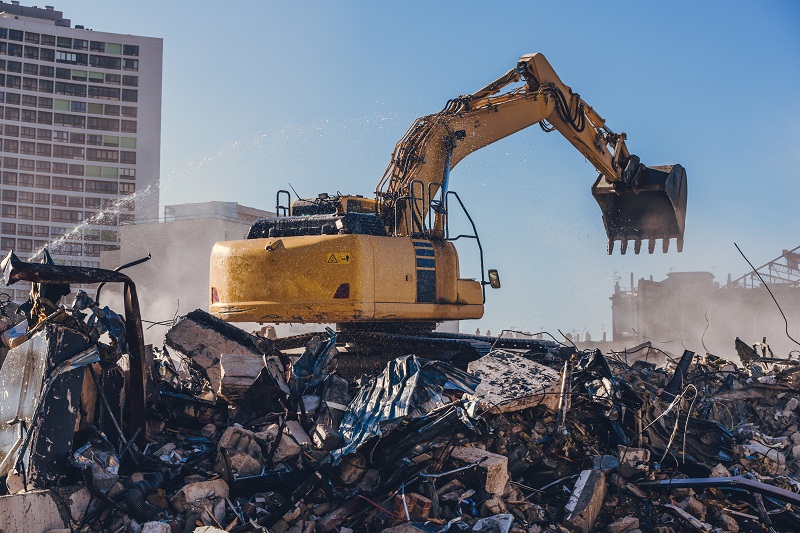
Demolition has long been a critical aspect of construction and urban development. Traditionally characterized by heavy machinery and manual labor, the industry is undergoing a transformation driven by emerging technologies and innovative approaches. As we face increasing environmental concerns and regulatory challenges, the need for more efficient, sustainable, and safe demolition practices has never been greater. This blog will explore the new frontier in house demolition, examining the latest technologies and methodologies that are reshaping the industry.
Traditional Demolition Methods
Description of Common Techniques
Traditional demolition methods primarily include mechanical and manual demolition.
- Mechanical Demolition: Utilizes heavy machinery like excavators and wrecking balls to dismantle structures. While effective for large buildings, it can be indiscriminate, leading to unnecessary waste.
- Manual Demolition: Involves workers using hand tools to dismantle structures. This method is more controlled but labor-intensive and time-consuming.
Advantages and Disadvantages of Traditional Approaches
- Advantages:
- Quick and efficient for larger structures.
- Familiarity among workers and contractors.
- Disadvantages:
- High environmental impact due to waste.
- Potential safety hazards for workers.
- Limited ability to salvage materials for reuse.
Environmental Impact of Conventional Demolition Practices
Traditional demolition contributes significantly to landfill waste and environmental degradation. The industry faces increasing pressure to adopt more sustainable practices that minimize waste and promote recycling.
The Need for Change
Challenges Faced by the Traditional Demolition Industry
The traditional demolition industry grapples with various challenges, including labor shortages, rising costs, and the need for improved safety measures. These issues highlight the necessity for innovative solutions.
Increasing Environmental Regulations
As environmental concerns grow, regulations become more stringent. The demolition industry must adapt to comply with these regulations, driving the need for sustainable practices.
Demand for Sustainable Practices
Stakeholders, including clients and regulatory bodies, increasingly prioritize sustainability. The shift towards eco-friendly demolition practices reflects a broader societal trend emphasizing environmental responsibility.
Emerging Technologies in House Demolition
1. Robotics and Automation
Use of Robotic Arms and Drones
Robotic technology is revolutionizing demolition by enhancing precision and safety. Robotic arms can dismantle structures in confined spaces, while drones facilitate aerial inspections.
Advantages of Robotic Demolition
- Safety: Reduces human exposure to hazardous environments.
- Efficiency: Increases speed and precision in demolition tasks.
- Cost-Effectiveness: Minimizes labor costs and project timelines.
Case Studies of Robotic Demolition Projects
Several pioneering projects have successfully employed robotic demolition, showcasing reduced costs and enhanced safety.
2. 3D Scanning and Modeling
Introduction to 3D Scanning Technology
3D scanning captures detailed spatial data, creating accurate models of existing structures. This technology aids in planning and assessing potential challenges before demolition begins.
Benefits for Planning and Execution
- Accuracy: Ensures precise measurements and planning.
- Visualization: Facilitates better communication among stakeholders.
- Risk Mitigation: Identifies potential hazards in advance.
Examples of Successful Applications
Projects that utilized 3D scanning have reported improved project outcomes, including time savings and reduced waste.
3. Advanced Materials Handling
Innovations in Material Sorting and Recycling
Emerging technologies enable efficient sorting of materials for recycling. Automated systems can identify and separate valuable resources from demolition debris.
Technologies for Hazardous Material Removal
Advanced technologies, such as vacuum systems and containment methods, ensure safe removal of hazardous materials, reducing health risks for workers.
Impact on Sustainability
Enhanced materials handling not only improves recycling rates but also minimizes landfill waste, aligning with sustainable practices.
4. Drones in Demolition
Uses of Drones for Site Surveys and Inspections
Drones offer a bird’s-eye view of demolition sites, enabling efficient site surveys and inspections. They provide real-time data, enhancing project oversight.
Benefits of Aerial Data Collection
- Efficiency: Speeds up data collection processes.
- Safety: Reduces the need for workers to enter hazardous areas.
- Comprehensive Analysis: Captures extensive site information for better decision-making.
Future Potential of Drone Technology
As drone technology evolves, its applications in demolition are expected to expand, including enhanced mapping and data analysis capabilities.
5. Virtual Reality (VR) and Augmented Reality (AR)
How VR/AR Can Aid in Demolition Planning
VR and AR technologies offer immersive experiences that allow stakeholders to visualize projects before they occur. This capability enhances planning and collaboration.
Visualizing Outcomes and Impacts
Stakeholders can better understand the implications of their decisions, leading to more informed choices throughout the demolition process.
Examples of VR/AR Applications in the Industry
Early adopters of VR/AR have reported improved project outcomes, showcasing the potential for these technologies to revolutionize demolition planning.
Innovative Approaches to Demolition
1. Selective Demolition
What is Selective Demolition?
Selective demolition involves carefully dismantling specific parts of a structure while preserving others for reuse. This method is particularly beneficial for renovations or when maintaining historical elements.
Benefits Over Traditional Demolition Methods
- Reduced Waste: Minimizes the amount of debris sent to landfills.
- Cost-Effective: Salvages valuable materials for resale or reuse.
- Preservation: Maintains architectural integrity and historical value.
Case Studies Demonstrating Its Effectiveness
Successful selective demolition projects highlight the environmental and economic advantages of this approach.
2. Deconstruction
Definition and Principles of Deconstruction
Deconstruction is the process of systematically dismantling a structure to maximize material recovery. It focuses on reusing and recycling building materials.
Comparison with Traditional Demolition
While traditional demolition often leads to waste, deconstruction prioritizes sustainability, offering significant environmental benefits.
Economic and Environmental Benefits
Deconstruction not only supports sustainability but can also provide economic benefits through material resale and reduced disposal costs.
3. Green Demolition Practices
Overview of Green Demolition
Green demolition encompasses practices that prioritize sustainability throughout the demolition process, focusing on minimizing waste and maximizing material recovery.
Techniques and Materials Used
- Recycling: Sorting materials for recycling and reuse.
- Eco-Friendly Products: Using sustainable materials in new construction.
- Waste Diversion: Strategies to divert waste from landfills.
Conclusion
Emphasizing recycling and waste reduction aligns with global sustainability goals, making green demolition practices increasingly vital.





